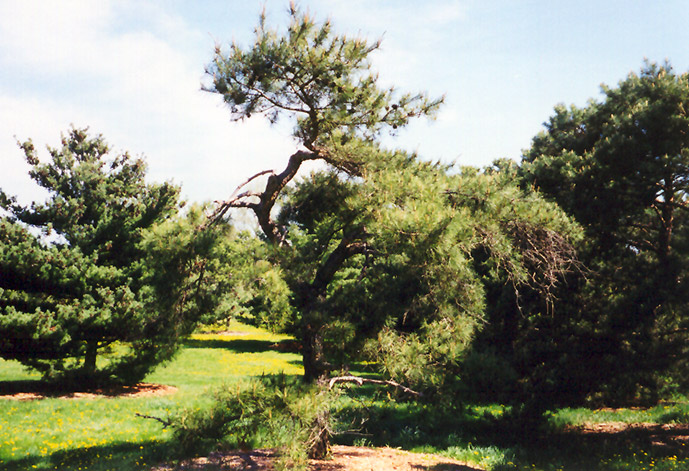* This is a "special order" plant - contact store for details
Height: 50 feet
Spread: 45 feet
Sunlight:
![]()
Hardiness Zone: 4a
Description:
One of the most picturesque of all pines at maturity, with irregularly spreading and arching branches and open habit, also interesting orange-brown bark; best in full sun with lots of room to spread, your patience will be rewarded
Ornamental Features
Japanese Red Pine is primarily valued in the landscape for its ornamental globe-shaped form. It has emerald green evergreen foliage. The needles remain emerald green throughout the winter. The shaggy coppery-bronze bark is extremely showy and adds significant winter interest.
Landscape Attributes
Japanese Red Pine is a dense evergreen tree with a strong central leader and a more or less rounded form. Its average texture blends into the landscape, but can be balanced by one or two finer or coarser trees or shrubs for an effective composition.
This is a relatively low maintenance tree. When pruning is necessary, it is recommended to only trim back the new growth of the current season, other than to remove any dieback. It has no significant negative characteristics.
Japanese Red Pine is recommended for the following landscape applications;
- Accent
- Shade
Planting & Growing
Japanese Red Pine will grow to be about 50 feet tall at maturity, with a spread of 45 feet. It has a low canopy with a typical clearance of 5 feet from the ground, and should not be planted underneath power lines. It grows at a slow rate, and under ideal conditions can be expected to live to a ripe old age of 120 years or more; think of this as a heritage tree for future generations!
This tree should only be grown in full sunlight. It prefers dry to average moisture levels with very well-drained soil, and will often die in standing water. It is not particular as to soil type, but has a definite preference for acidic soils. It is highly tolerant of urban pollution and will even thrive in inner city environments. This species is not originally from North America.
* This is a "special order" plant - contact store for details







